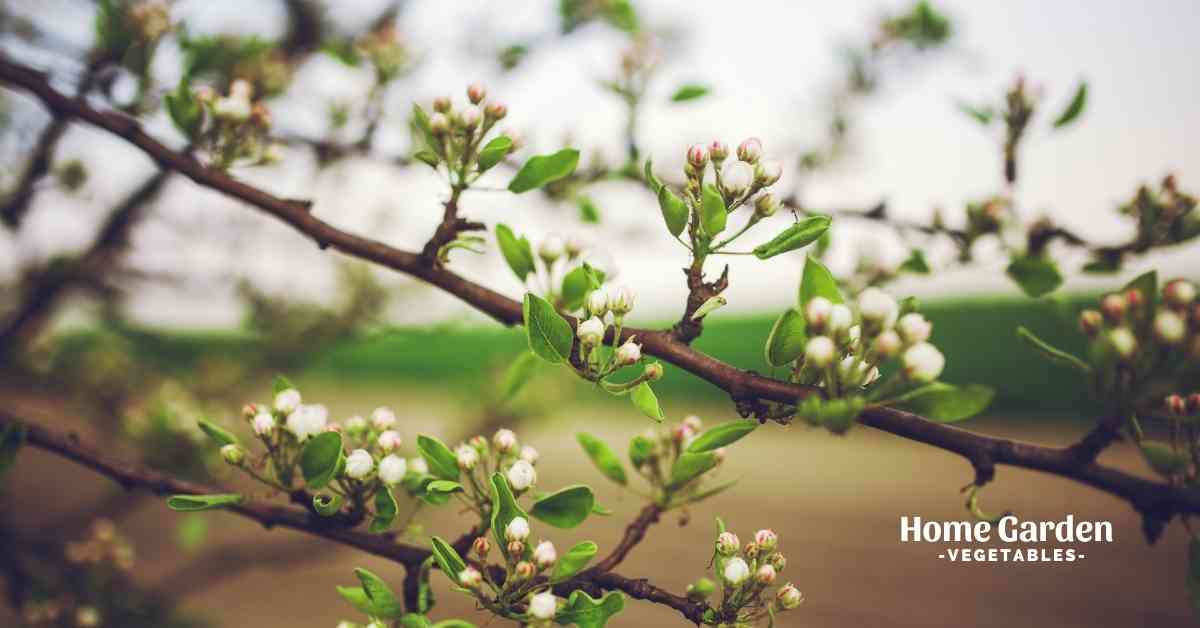As the weather warms up and the days become longer, it’s time to start thinking about caring for your Apple Trees. In spring, Apple Trees must be pruned, fertilized, and sprayed for pests and diseases.
Pruning is essential to remove any dead or diseased wood and shape the tree for good growth. Fertilizing helps the tree to develop strong roots and produce lots of fruit. And spraying for pests and diseases helps to keep the tree healthy and prevent problems later on. So don’t forget to give your Apple Trees extra attention this spring.
Reader Poll: What online courses would interest you?
What Should I Do To My Apple Tree In The Spring?
To ensure a bountiful apple harvest come fall, you should do a few things to your Apple Tree in the spring. First, prune any dead or diseased branches from the tree. This will promote healthy growth and prevent the spread of disease. Next, fertilize the tree with a good quality fruit tree fertilizer.
This will give the tree the nutrients it needs to produce many apples. Finally, make sure to water the tree regularly throughout the spring and summer. A lack of water can stress the tree and reduce the apple crop. Following these simple steps, you can enjoy a delicious harvest of apples come autumn.
Spraying Apple Trees
Spraying Apple Trees is an essential part of keeping them healthy and productive. Several things can be sprayed on Apple Trees, including insecticides, fungicides, and herbicides. Each spray type has another purpose and can help prevent different problems. For example, insecticides can help to control pests that might otherwise damage the apples, while fungicides can help to prevent diseases that could rot the fruit.
Subscribe to our newsletter!
Fertilizing Apple Trees in Spring
Fertilizing Apple Trees in spring is an essential part of tree care. Apple Trees need nitrogen, phosphorus, and potassium to grow and produce fruit. A balanced fertilizer with these three elements is best. The warmer weather and longer days stimulate growth, so your trees can take full advantage of the nutrients in the fertilizer.
Apply a balanced fertilizer, such as 10-10-10, around the base of the tree, being careful not to get any on the trunk or leaves. Water the fertilizer in the well. You should also consider doing a soil test to see what nutrients your soil lacks. This will help you choose the right fertilizer for your trees. Apply the fertilizer before new growth begins in the spring.
What do you put around the bottom of an Apple Tree?
You can put a few things around the bottom of an Apple Tree to help it thrive. One is to put a layer of mulch around the tree. This will help keep the roots cool and moist and will also help prevent weeds from growing around the tree. Another option is to put a fence around the tree to keep animals from eating the apples or damaging the tree. You can also set a trellis around the tree to support the branches and keep the apples from touching the ground.
Epsom salt for Apple Tree
Epsom salt is a mineral that can be beneficial for Apple Trees. It can help promote root growth, increase fruit production, and improve tree health. When applied to the soil around the base of the tree, Epsom salt can help provide essential nutrients that the tree needs. Following the manufacturer’s directions when using Epsom salt is necessary, as too much can damage the tree.
Epsom salt is a great way to encourage growth in Apple Trees. Mixing one tablespoon of salt with 1 gallon of water and spraying it on the leaves and branches of the tree will help the tree to absorb more nutrients and produce more fruit.
Using Dormant oil
A critical step in ensuring a healthy crop is dormant oil in spring. Dormant oil is a mixture of horticultural oil and water sprayed on trees during their dormant period (usually late winter or early spring). The oil suffocates overwintering insects and mites, damaging the tree and reducing the fruit’s quality.
To apply dormant oil, mix it according to the manufacturer’s directions and then spray it onto the tree, making sure to cover the entire surface. Be sure to do this when the temperatures are above freezing, and there is no chance of rain for at least 24 hours. Your Apple Trees will be primed for a healthy and bountiful season with some care and attention.
Keep an eye out for pests and diseases in Apple Trees in spring.
As the weather warms up in spring, Apple Trees can become susceptible to various pests and diseases. Keep an eye out for signs of infestation or infection, and take action to treat the problem as soon as possible. Common pests include aphids, scales, and mites, while common diseases include black rot, apple scab, and powdery mildew. You can help keep your Apple Trees healthy and productive by staying on top of these problems.
Water your Apple Trees regularly in spring
Water your Apple Trees regularly in spring to ensure a healthy fruit crop. Spring is when the trees are actively growing and producing fruit, so it is essential to ensure they have enough water. A good rule of thumb is to water them once a week, soaking the roots thoroughly. If you live in an area with much rainfall, you may not need to water as often.
Conclusion
Taking care of Apple Trees in spring is a rewarding experience. The trees are beautiful, and the fruit is delicious. The key to success is to start early and to be patient. The trees need to be pruned, fertilized, and watered. They also need to be protected from insects and diseases. If you follow these steps, you will be rewarded with a bountiful harvest of apples.

